Original WWII British Landing Craft Infantry (LCI) Design Blueprint
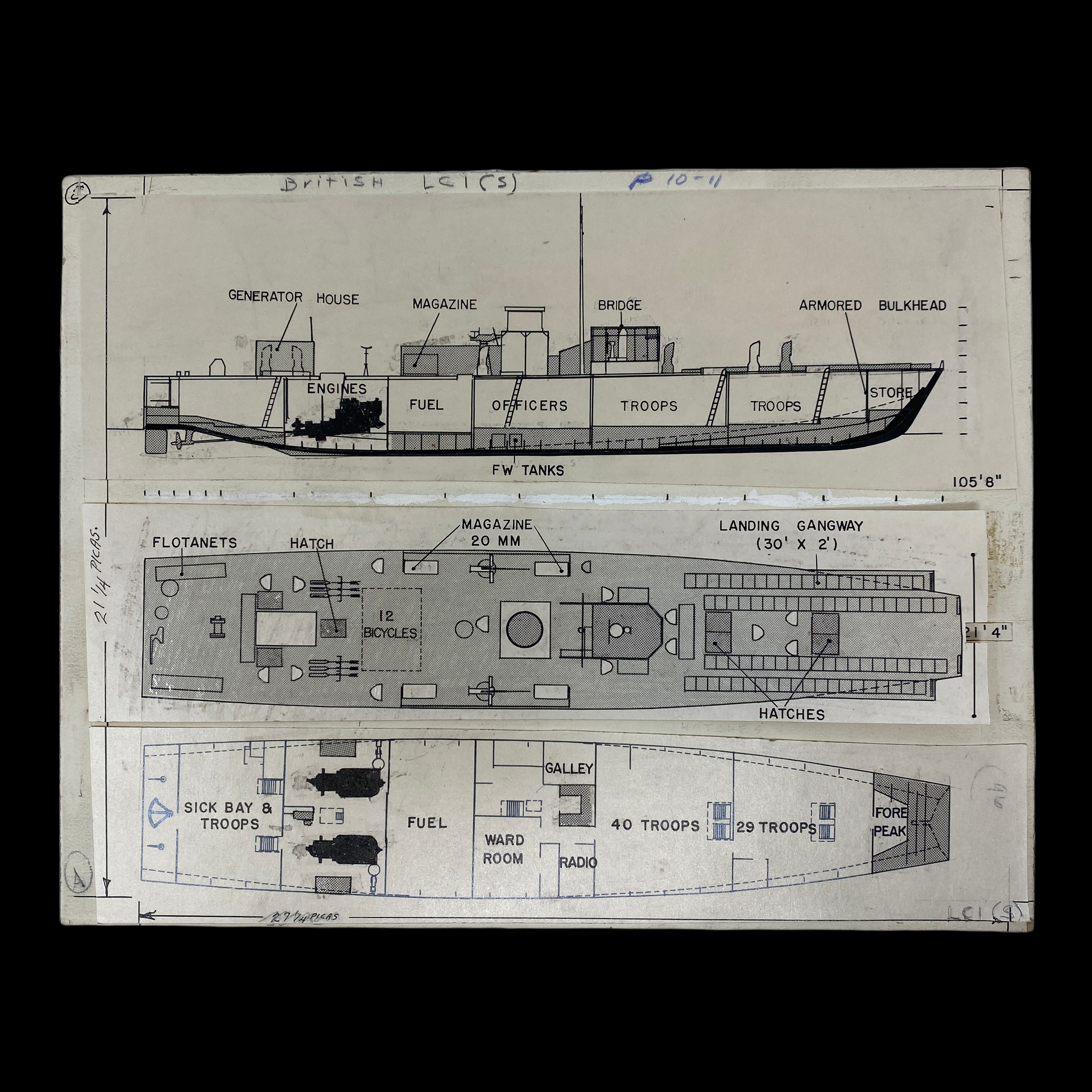


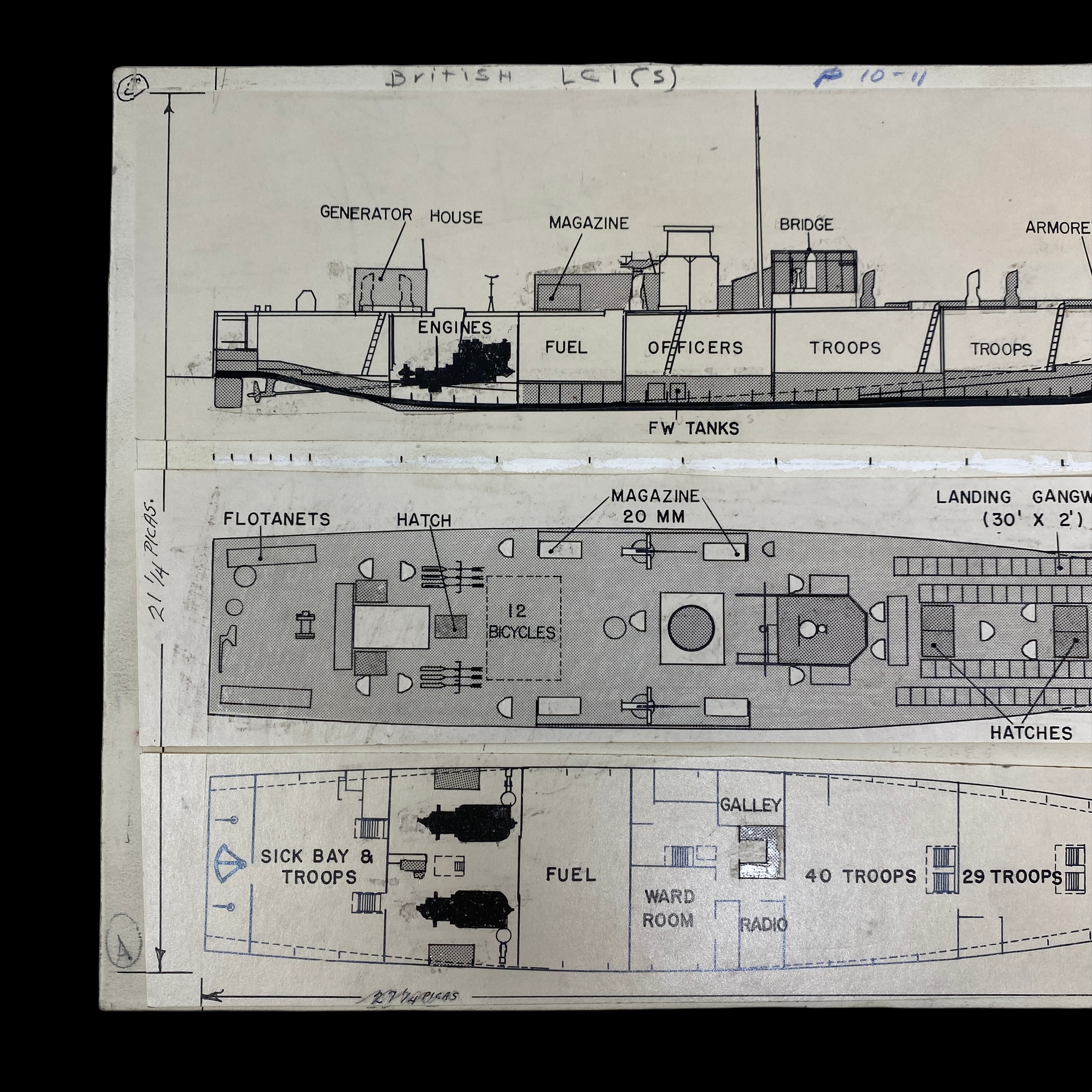
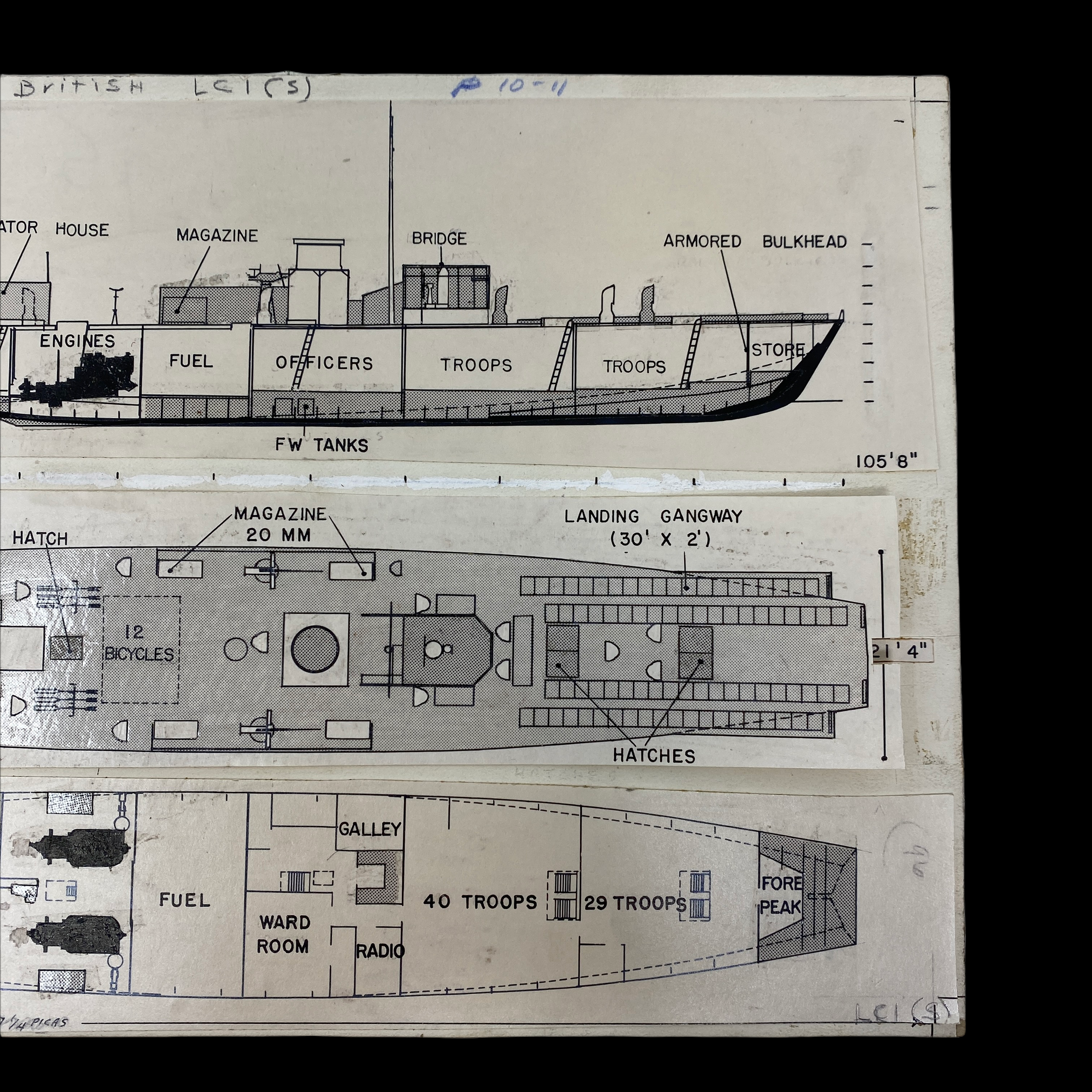
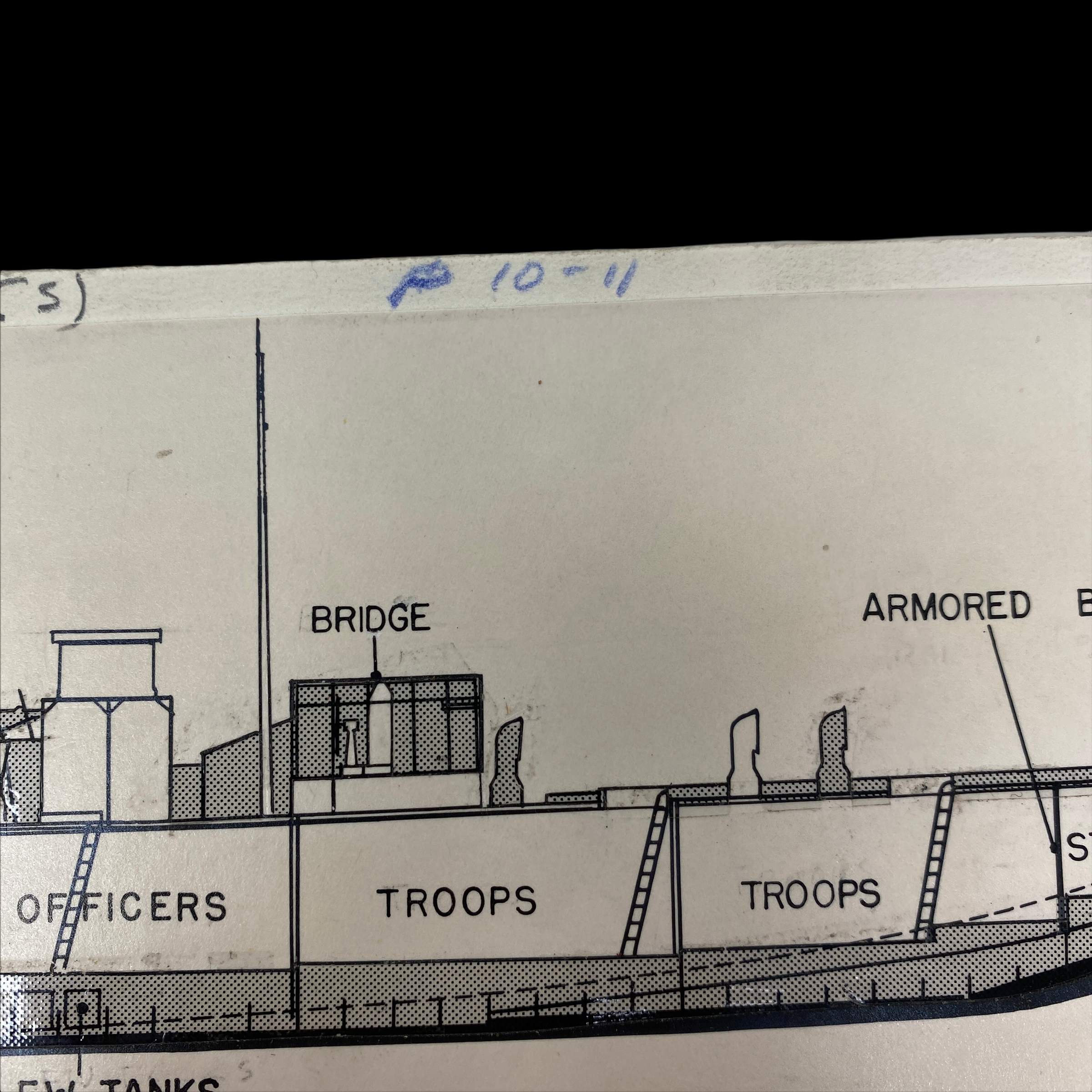
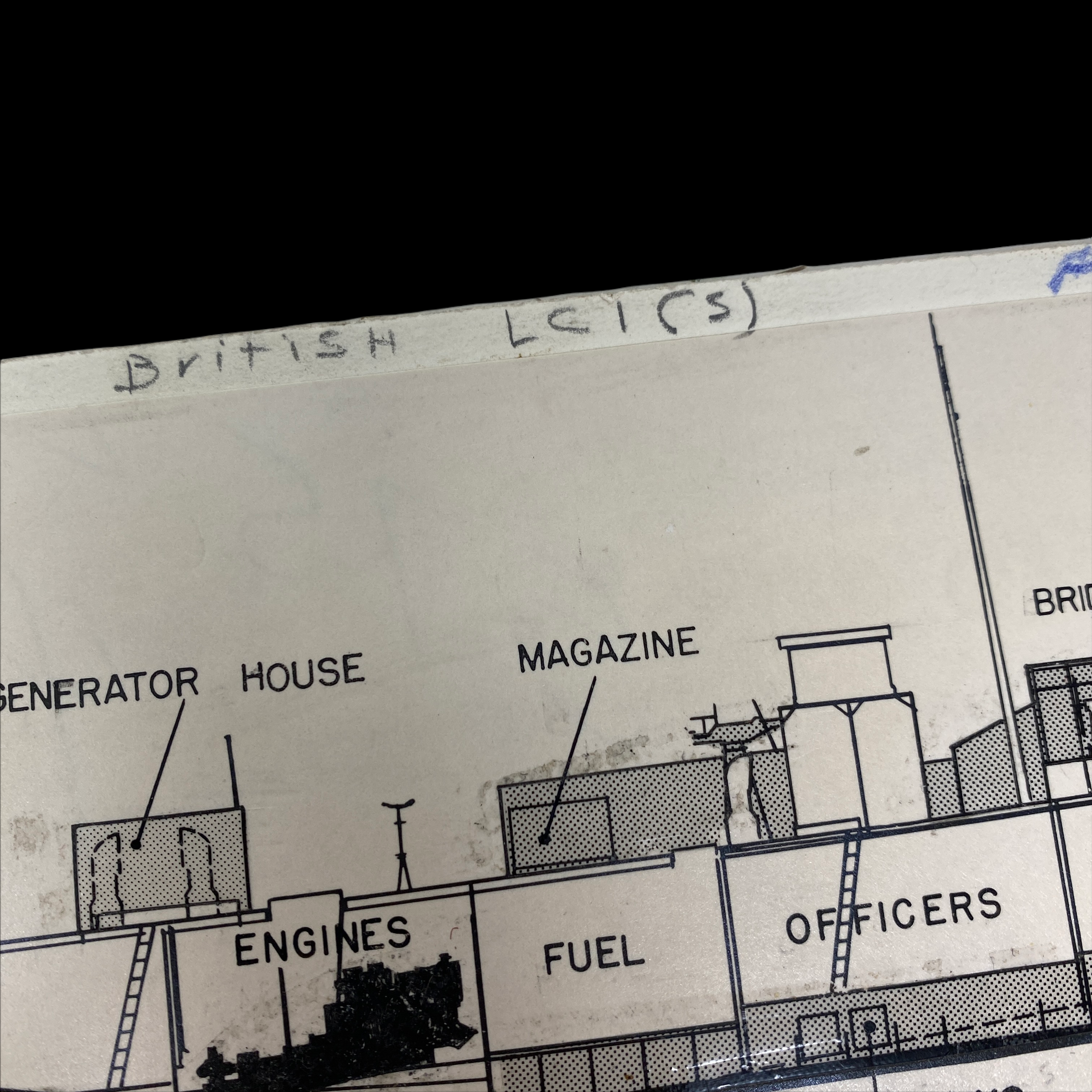

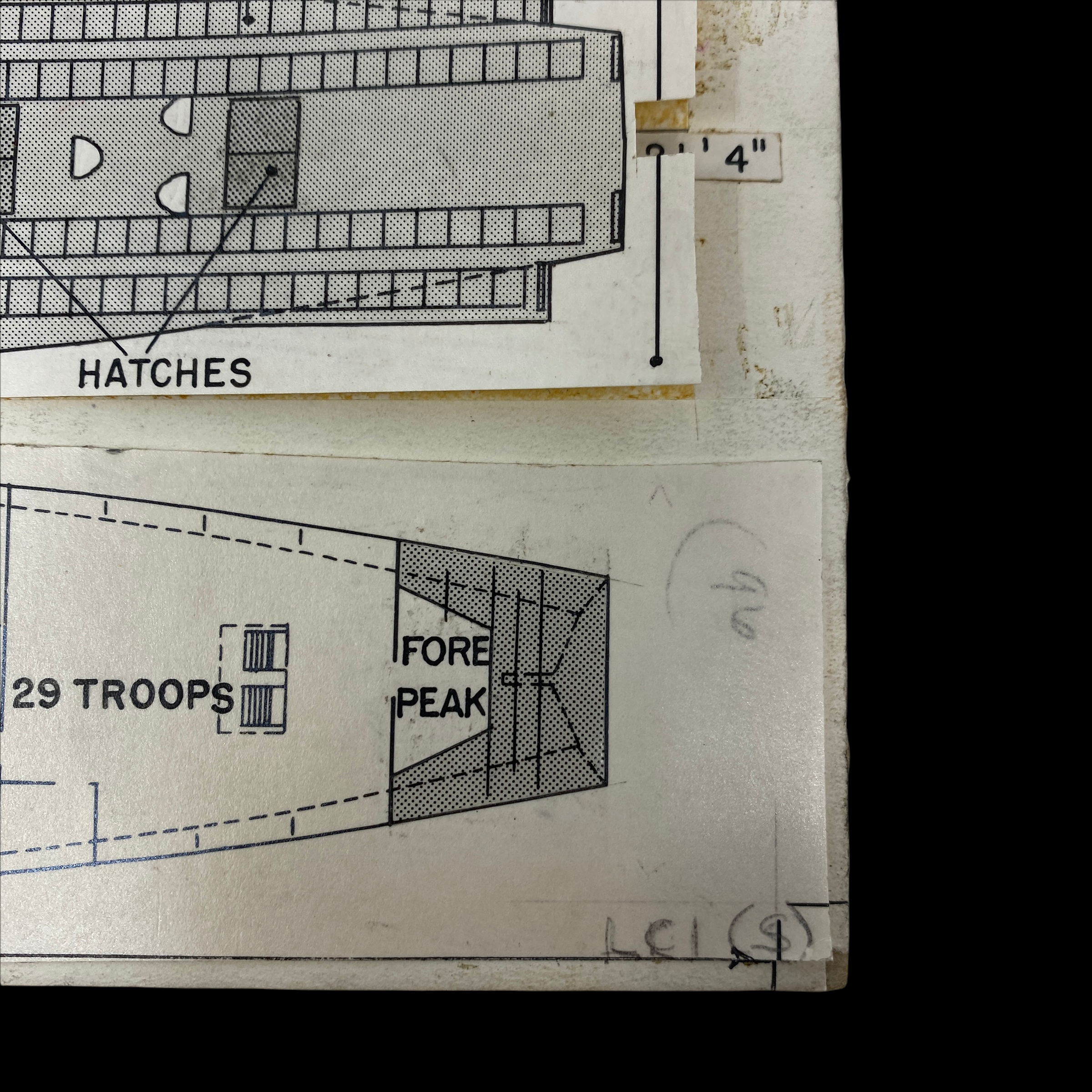
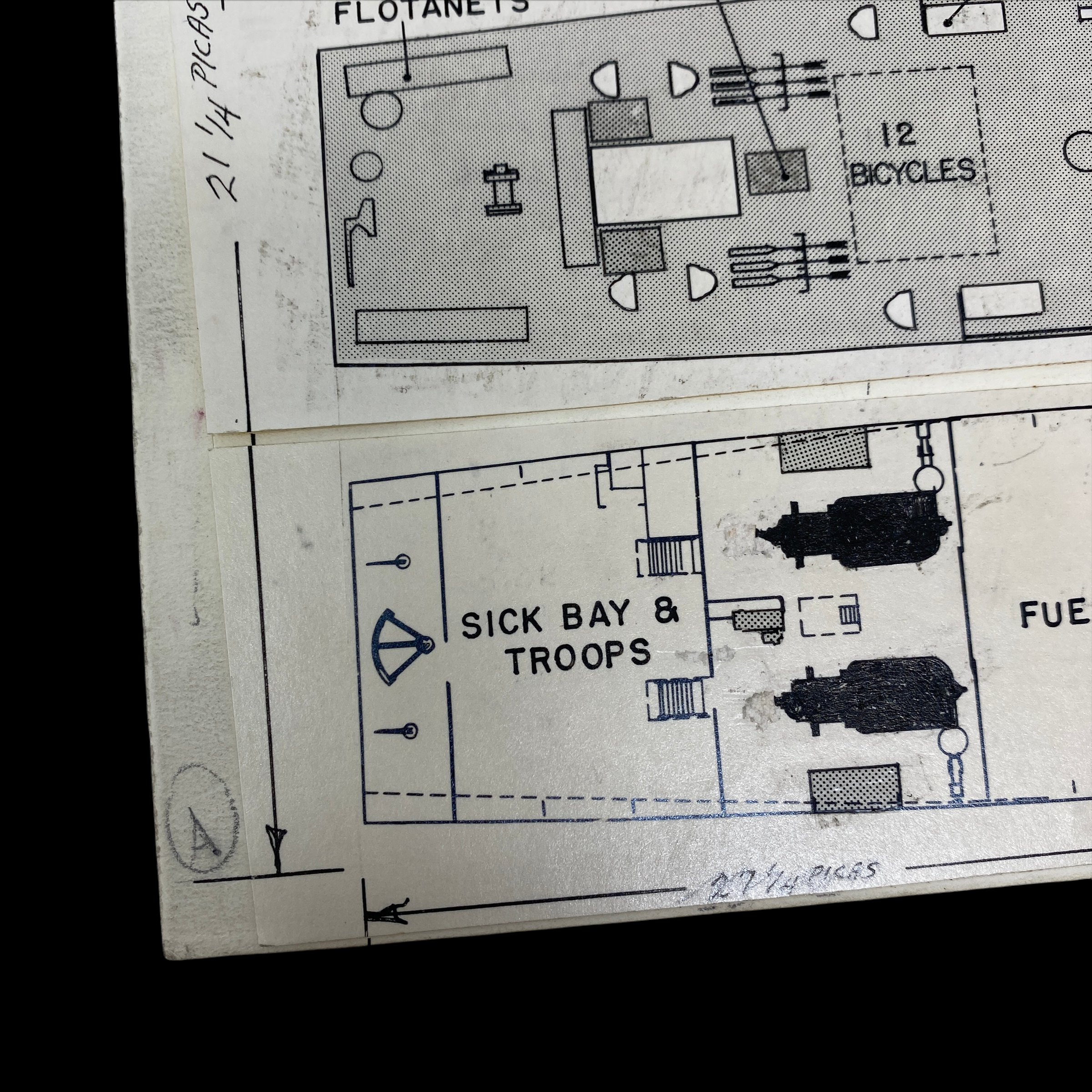
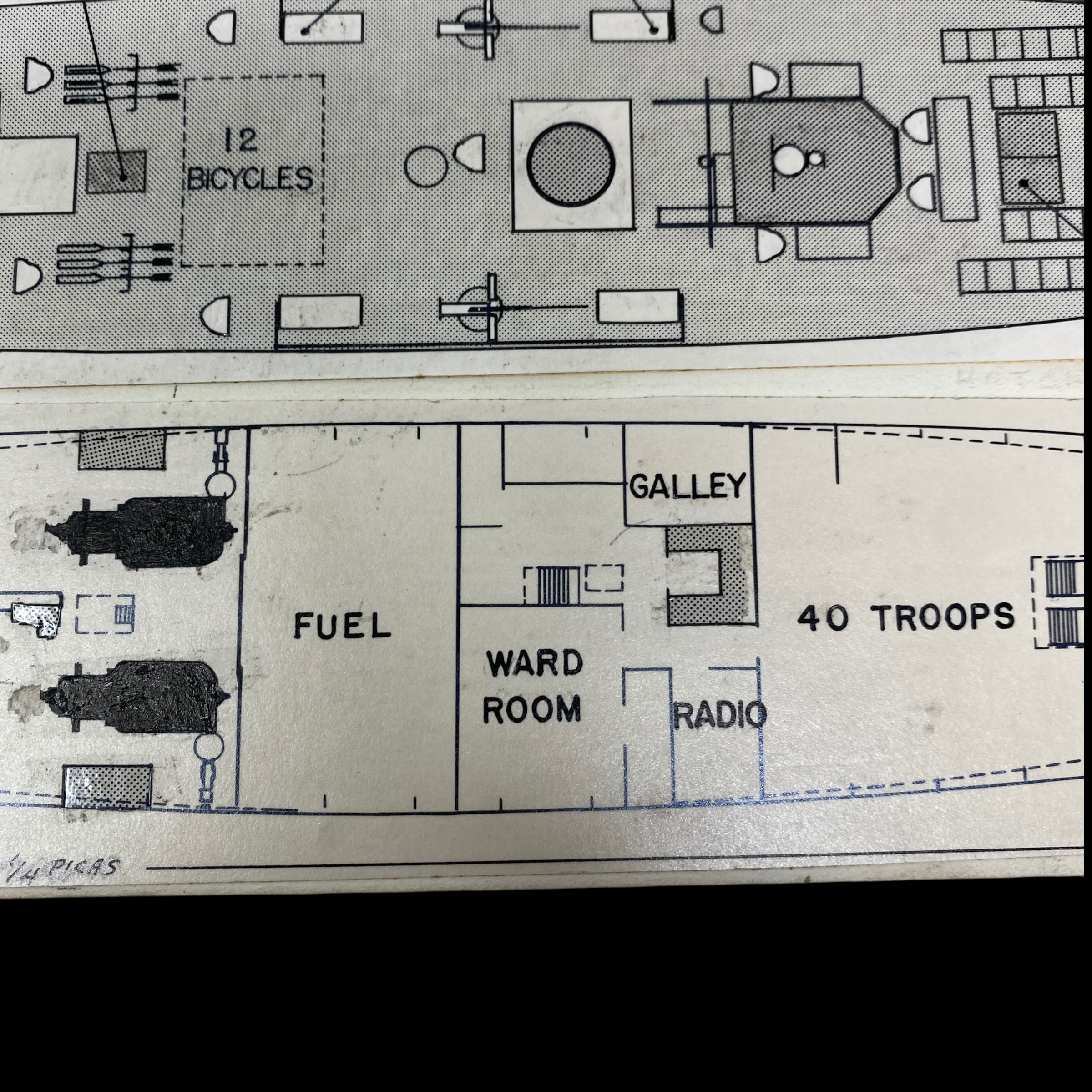



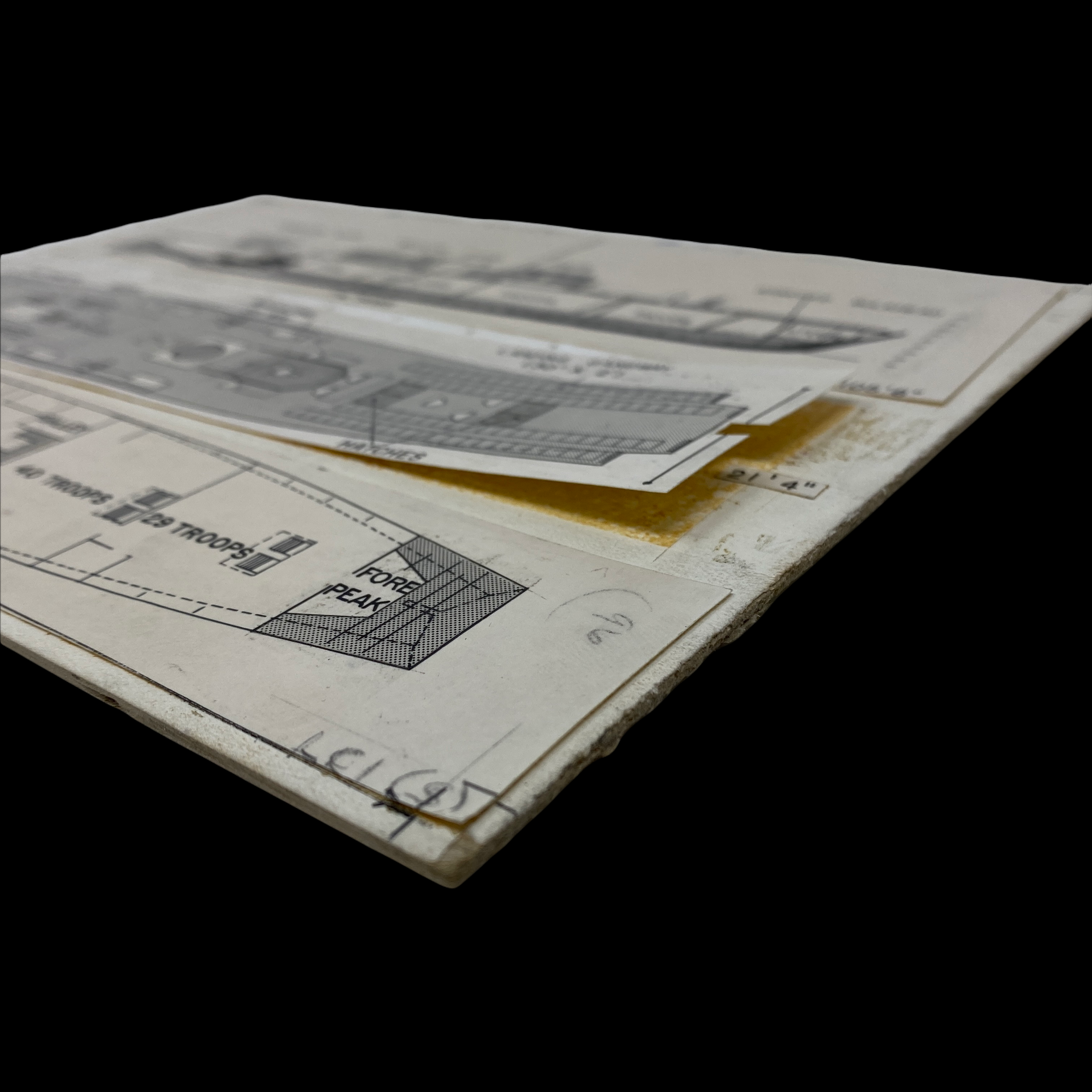
Original WWII British Landing Craft Infantry (LCI) Design Blueprint
At the beginning of World War II, when France fell to Nazi Germany, Britain realized that the war against Adolf Hitler would have to be an amphibious war, since the ports of France were no longer available for an assault against the Third Reich. If Britain was to counterattack the Nazis, they would have to do it the hard way—putting ashore large groups of men under heavy opposition. As a solution, the British came up with three new types of landing craft to meet this need. The Landing Craft Tank (LCT), Landing Ship, Tank (LST), and Landing Craft, Infantry (LCI).
This original and heavily marked WWII era British LCI blueprint shows one of the most infamous amphibious assault ships of the Second World War. What makes this WWII LCI blueprint so rare is the heavy use and design marks.
The Landing Craft Infantry (LCI) were developed in response to a British request for a vessel capable of carrying and landing substantially more troops than their smaller Landing Craft Assault (LCA). The result was a small steel ship that could land 200 men, traveling from rear bases on its own bottom at a speed of up to 15 knots. Some 923 were built starting in 1943, serving in both the Pacific and European theaters, including a number that were converted into heavily armed beach assault support ships.
The LCI carried passengers, but could not transport vehicles. LCIs were 158 feet long and 23 feet, 3 inches wide at the middle. They typically had a crew of 24-60 sailors, and carried 200 soldiers, who descended from ramps on each side of the craft during landings. LCIs were not originally designed for cross-ocean journeys, but did so out of necessity and urgency during WWII. They sailed from shipyards in the United States to the European and Pacific Theatres. Their flat-bottom hulls were designed for beaching, which meant the men aboard felt every wave, and many sailors and soldiers ended up seasick non-stop. The hull or skin was made of a quarter-inch steel plate. LCIs were propelled using two sets of quad General Motors 6-cylinder diesel engines (8 engines total).
LCIs didn’t share the limelight like the more glamorous aircraft carriers, battleships and destroyers. In fact, they earned the name “Waterbug Navy,” when an admiral looked down from his battleship and watched the LCI’s down below scurrying back and forth, and commented that they looked like a bunch of waterbugs. The phrase stuck.
LCIs and the men who served on them did the dirty work of bringing invasion troops right up to the fighting, laying smoke to hide larger ships from attacks, and providing close-in fire support using machine guns, rockets, and mortars. In doing so, they suffered enormous casualties. To the sailors manning these awkward craft, they were known as the “Elsie Item” – “Elsie” representing “LC” and “Item” being the phonetic alphabet word for “I.”
When America entered the Second World War after the Japanese attack on Pearl Harbor on December 7, 1941, they began putting the new landing ships and crafts into mass production in starting in 1942. The LCI was called a “craft” rather than a ship because it was less than 200 feet long (“ships” were over 200 feet long), and it could not travel across large bodies of water. In fact, the original plan was to build the LCI into sections, ship them to their designated theater of war on larger ships, and finish assembling them there. However, the necessities of war required the LCIs to prove their sea-worthiness, as those “Lousy Crate Indeeds” crossed both the Atlantic and Pacific Oceans in the early days of World War II.